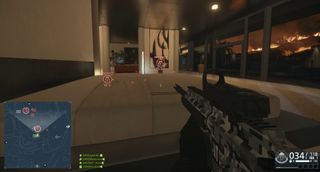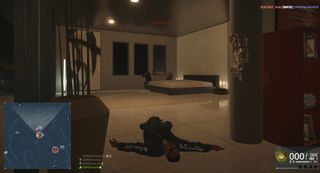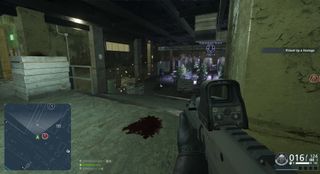Why Battlefield Hardline doesn't work as a 5v5 game

Open up the server browser on Battlefield Hardline’s Battlelog. Scroll past thematic cops-on-crooks boom-matches like Hotwire or Heist. Skip over the teeming 64-player Conquest grindhouses. There, near the bottom of the pile, like a squashed slice of vegetable in a huge sandwich, sits Rescue mode.
See how far you get into this description before a sense of familiarity clicks on: Rescue is a 5v5 single elimination mode without vehicles. Police rescue hostages and secure them at an extraction zone for a victory. Criminals prevent losing their precious cargo by either dusting the entire police team or waiting out the three-minute timer.
In other words, Rescue fell out of a cloning chamber with Counter-Strike. A typical match progresses almost in lockstep with CS’ pedigree deliberate windup. Criminals perch on vantage points for gathering critical information, staying close to the hostages or lancing out in small skirmishes. Police strike in quick ambushes after careful positioning or attempt a flanking stealth-and-steal with a silenced approach. It’s sometimes all over in less time needed to traverse some of the larger maps.
The juxtaposition between Rescue and its bombastic brother modes is jarring. Visceral intends to diversify the definition of Battlefield play beyond high-scale, combined arms warfare—not a bad goal, but the other motive here is introducing competitive influences into a comparatively undemanding FPS. For how long Battlefield’s been around, Rescue stands as the strongest official push for a more distinct esports scene for the franchise.

This isn’t the first effort, either. ESL One frequently holds Battlefield 4 tournaments with some notable lineups from well-known teams such as SK Gaming and Fnatic participating in custom Domination rounds (a mode similar to Conquest without the ability to spawn directly on held capture points). The series as a whole hasn’t seen much success establishing a large esports audience—an issue reflective of competitive FPS viewership compared to juggernauts like League of Legends or Hearthstone—but sat beside Counter-Strike: Global Offensive’s record-setting peak viewer numbers, it’s obvious Battlefield could improve.
Rescue isn’t that improvement. Simply aping a classic (and relatively unplayed) CS mode doesn’t necessarily translate into surefire success, nor does it deviate enough to offer a standout alternative to CS:GO. The moment-to-moment gameplay—defense strategizing on entrenched hostage overwatch and assaults relying on precision and speed—won’t deliver an experience CS:GO doesn’t already provide. Even the rules governing wins and losses got Ctrl-V’d right out of CS:GO’s playbook: a hostage gets carried instead of blundering in tow, and only one rescue seals victory.
The variables and awareness Rescue requires don’t make much sense in Battlefield. Tactical shooters are often ascribed similar mental complexity to chess games where outplaying opponents involves prediction, savvy premonition, and map smarts for a slow-burn progression punctuated by flash snapshots of intense execution. Battlefield’s pace is supersonic by comparison with its emphasis on endless action. I can’t imagine carefully planning a no-collateral breach-and-clear in the same game that has a crane slicing into a skyscraper or people shooting RPGs at each other out of sports cars.
The biggest gaming news, reviews and hardware deals
Keep up to date with the most important stories and the best deals, as picked by the PC Gamer team.

Rescue’s maps present problems, as well. They’re essentially cordoned versions of full-size Hardline maps. Boundaries are simply squeezed together to centralize a single area or building with no change in configuration. That means Rescue maps are still designed on a significantly larger scale with an openness intended for double-digit player counts, and that leads to inconsistent flow. The nighttime map Growhouse features long lanes of sight and funnel-prone linear hallways leading into the hostage area. By contrast, Everglades’ flat swampland makes protecting all flank angles frustratingly difficult. Destruction and interaction effects such as blast marks or opened doors don’t reset between rounds, which can be confusing. A change isn’t likely anytime soon as long-lasting map effects are part of the Frostbite engine’s draw.
Battlefield Hardline is an FPS you launch for a few hours of chaotic action, and it pulls it off pretty well. Rescue isn’t completely hopeless, but the likelihood of it competing against CS:GO feels quite dim at the moment, and its issues continue on past what’s described here (an absent matchmaking framework versus the superb Skill Groups system, for one). Until Rescue sees more players—most of its servers are empty all day—it won’t earn much attention from the competitive community.
Omri Petitte is a former PC Gamer associate editor and long-time freelance writer covering news and reviews. If you spot his name, it probably means you're reading about some kind of first-person shooter. Why yes, he would like to talk to you about Battlefield. Do you have a few days?
Most Popular




